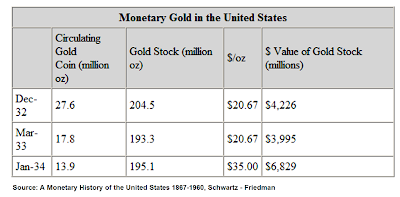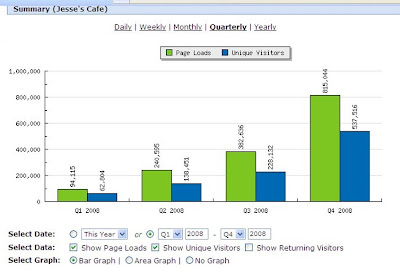 And so it begins...
And so it begins...
Each person has to allow for their own circumstances, and provide for their daily needs as well as their longer term investment decisions.
Speculation and leverage are a trap in this market, because it is permeated by abusive practices and a deterioration of the conditions necessary to free markets.
It is truly amazing that the world continues to allow New York, Chicago and London to set the short term prices for their goods and labor.
The status quo will do all in its power to perpetuate itself, and hold the line on meaningful change and reforms for a variety of all too human motivations. This, we believe, is what has been causing this series of bubbles, booms and busts. Bernanke is fighting the last economic crisis.
As we can, provisions should be made for the troubles to come. We did not get where we are overnight, and we will not repair ourselves in a year either.
UK Telegraph
Merrill Lynch says rich turning to gold bars for safety
By Ambrose Evans-Pritchard
Last Updated: 10:32AM GMT 09 Jan 2009
Merrill Lynch has revealed that some of its richest clients are so alarmed by the state of the financial system and signs of political instability around the world that they are now insisting on the purchase of gold bars, shunning derivatives or "paper" proxies.
Gary Dugan, the chief investment officer for the US bank, said there has been a remarkable change in sentiment. "People are genuinely worried about what the world is going to look like in 2009. It is amazing how many clients want physical gold, not ETFs," he said, referring to exchange trade funds listed in London, New York, and other bourses.
"They are so worried they want a portable asset in their house. I never thought I would be getting calls from clients saying they want a box of krugerrands," he said.
Merrill predicted that gold would soon blast through its all time-high of $1,030 an ounce, and would hit $1,150 by June.
The metal should do well whatever happens. If deflation sets in and rocks the economic system it will serve as a safe-haven, but if massive monetary stimulus gains traction and sets off inflation once again it will also come into its own as a store of value. "It's win-win either way," said Mr Dugan. He added that deflation may prove the greater risk in coming months. "It's very difficult to get the deflation psychology out of the human brain once prices start falling. People stop buying things because they think it will be cheaper if they wait."
He added that deflation may prove the greater risk in coming months. "It's very difficult to get the deflation psychology out of the human brain once prices start falling. People stop buying things because they think it will be cheaper if they wait."
Merrill expects global inflation to hover near zero, with rates of minus 1pc in the industrial economies. This means that yields on AAA sovereign bonds now at 3pc will offer a real return of 4pc a year, which is stellar in this grim climate. "Don't start selling your government bonds," Mr Dugan said, dismissing talk of a bond bubble as misguided. (Government bonds are a safe haven for now on the short tend of the curve, but to say there is no bubble on the long end is remarkable. The only vairable is how long before that bubble bursts. The real question is whether the risk is worth the return for you, and that will vary. It seems insane to hold the long end when you can take the shorter end. - Jesse)
He warned that the eurozone was likely to come under strain this year as slump deepens. "There is going to be friction as governments in the south start talking politically about coming out of the euro.
I don't see the tensions in Greece as a one-off. It is a sign of social strain in countries that have lost competitiveness." (Wait until it really gets rolling in the US, UK, Russia and China. Then there will be headlines - Jesse)
Daily Telegraph
Gold rush erupts over financial crisis
By Nick Gardner
January 10, 2009 12:01am
THE global financial crisis has sparked a new gold rush.
Worried investors seeking a safe home for their money are ploughing billions of dollars into the precious metal in a bid to preserve their wealth.
Demand has now reached such unprecedented levels that the Perth Mint, Australia's biggest wholesaler of gold coins and bars, has been forced to ration its sales.
Perth Mint's bullion sales rose 194 per cent in the December quarter compared with the corresponding period in 2007, while silver bullion sales were up 140 per cent.
The mint has suspended sales of all gold bars and all bullion coins - except its 1oz "Kangaroo" gold bullion coin. On Monday, after a three-month suspension, it will expand its range of bullion coins for sale but the restrictions remain in place for minted gold bullion bars so the mint can sell some gold to as many customers as possible.
On Monday, after a three-month suspension, it will expand its range of bullion coins for sale but the restrictions remain in place for minted gold bullion bars so the mint can sell some gold to as many customers as possible.
"We are working three shifts a day, six days a week, and still can't keep up with demand," Perth Mint CEO Ed Harbuz said. "I've never known anything like this in the precious metals market.
"We would be working Sundays too but we are having difficulty getting enough staff."
Non-minted gold in the form of cast bars produced by Perth Mint's local refinery can still be bought, although customers who want the bigger bars often have to wait several weeks.
One customer recently bought $500,000 worth of bullion and wanted it delivered so he could hold it personally.
"For very big orders we normally keep the gold in our depository for security reasons," Mr Harbuz said.
"Orders of $10 million or more are not unusual. Often the orders are much larger if we are dealing with pension funds or institutional investors."

















































